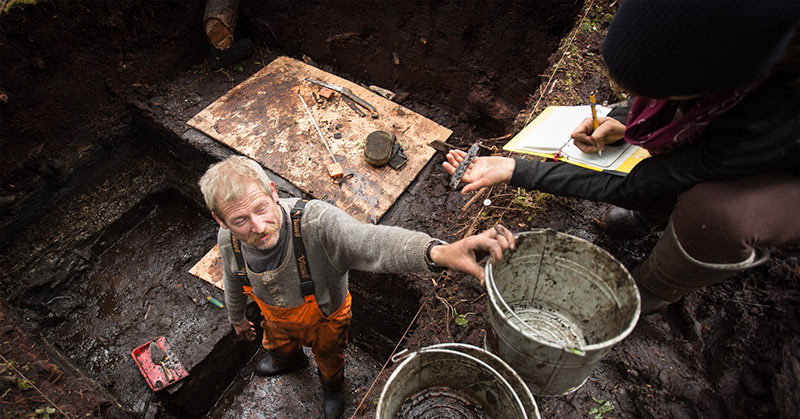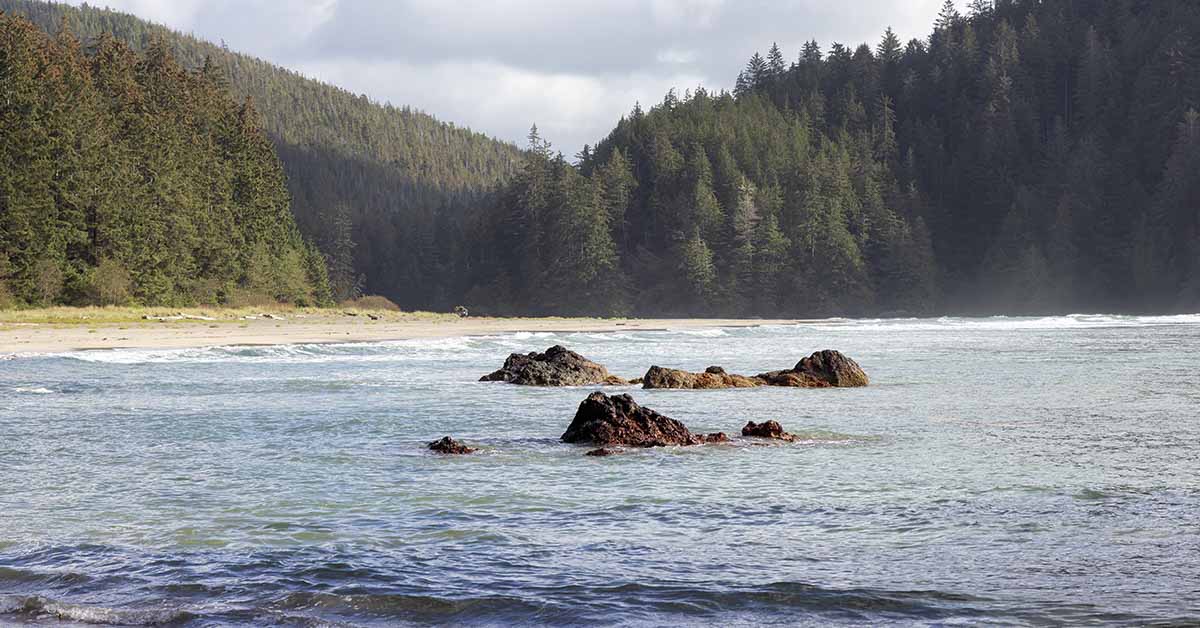A team of students found ruins of an ancient village that is older than the Egyptian pyramids. More than three times older, in fact.
The team was looking for evidence that supports the oral history behind a sliver of land during the Ice Age that never froze, as told by the indigenous Heiltsuk people. According to legend, the Heiltsuk sought shelter there during that time. This 14,000-year-old legend was proven after the discovery and excavation of a settlement on Triquet Island located on British Columbia’s Central Coast in Canada. [1]
Discovering an Ancient Heiltsuk Nation’s Settlement
Alisha Gauvreau, a Ph.D. student of anthropology at the University of Victoria, worked with Heiltsuk members during the excavation. Gauvreau and her team uncovered ancient spears, fish hooks, a device made of wood for launching projectiles, and tools for lighting fires.
“It appears we had people sitting in one area making stone tools beside evidence of a fire pit,” Gauvreau said. “The material that we have recovered… has really helped us weave a narrative for the occupation of this site.”
They also discovered a layer of ancient soil that seemed to be from a prehistoric hearth. Carbon dating estimated it to be 14,000 years old [2].
“I remember when we got the dates back, and we just sat back and said, ‘Holy moly, this is old,'” Gauvreau said.

Researchers state that these materials give us a glimpse of what may have been a large migration that occurred along British Columbia’s coastline. One theory suggests that the first native North Americans traveled from Asia over a non-icy Siberian land-bridge to Alaska during the Ice Age, an area that is now western and central Canada.
The University of Victoria’s research supports another theory that these natives were sea mammal hunters that traveled by boat.
Gauvreau explained that the ancient village on Triquet Island “really adds additional evidence” to this theory. “[A]rchaeologists had long thought that… the coast would been completely uninhabitable and impassible when that is very clearly not the case.” [3]
Proving the Heiltsuk Nation’s Oral History
“What this is doing, is changing our idea of the way in which North America was first peopled,” Gauvreau said. In a 2016 paper, she wrote that other oral histories may also be legitimized with archaeological digs. [4]
William Housty, a member of the Heiltsuk Nation, described the find as “very important” and said that it reaffirmed “a lot of the history that our people have been talking about for thousands of years.” He added that this evidence can improve the people’s position when negotiating over land rights.
“To think about how these stories survived,” said Housty.” Only to be supported by this archeological evidence is just amazing.” [5]
Read: Arizona Is Home To Ancient, 200 Million-Year-Old Trees, Some Of The World’s Oldest!
About the Heiltsuk Nation
The Heiltsuk Territory expands across 16,658 square kilometers of land and nearshore and offshore waters in the Central Coast of British Columbia. They’ve had a connection with these rich lands and waters for generations according to their oral tradition. It is believed that the original ancestors were sent by the Creator to this location before the great flood. These archaeological findings add scientific proof to these claims.
The Heiltsuk prescribe to the laws of their ancestors to guide their use of resources and how to manage their environment. It’s described as a complete and comprehensive system that explains their values, beliefs, practices, teachings, and consequences. Ultimately, it teaches that everything is connected and this unity is important to maintain. These laws are known as Gvi’ilas.
For example, one of these laws dictates that people should take a little and leave a lot, to care for resources, and obligations to share and support family and community. It also teaches respect for the spiritual matter in all living matter and the sustainability of resources.
The Heiltsuk have never surrendered their aboriginal rights of title, and they are proud of their heritage.
“We are satisfied with the reserve for living purposes, but we would like to have the free use of the surrounding land for the purposes of logging and fishing and to have all the hunting privileges on it,” said Charles Windsor.
“We are afraid that later on we will have no way to make any money, and we would like to have these villages reserved to us now. Our children are growing up now and they will have no way to make their living. That is what is bothering us at the present time.” [6]
Keep Reading: Evidence of 90-million-year-old rainforest uncovered beneath Antarctic ice
Sources
- Gabe Paoletti. Ancient Ruins Older Than The Pyramids Discovered In Canada. All That Is Interesting. September 6, 2017
- Jon Sharman. Ancient Canadian village discovered that’s older than the pyramids. Independent. September 6, 2017
- Brigit Katz. Found: One of the Oldest North American Settlements. Smithsonian Magazine. April 5, 2017
- Leanna Garfield. A student found an ancient Canadian village that’s 10,000 years older than the Pyramids. Business Insider. September 5, 2017
- Nick Wells. B.C. university student helps unearth 14,000 year-old village. CTV News. April 7, 2017
- Central Coast Indigenous Resource Alliance. Heiltsuk Nation.

